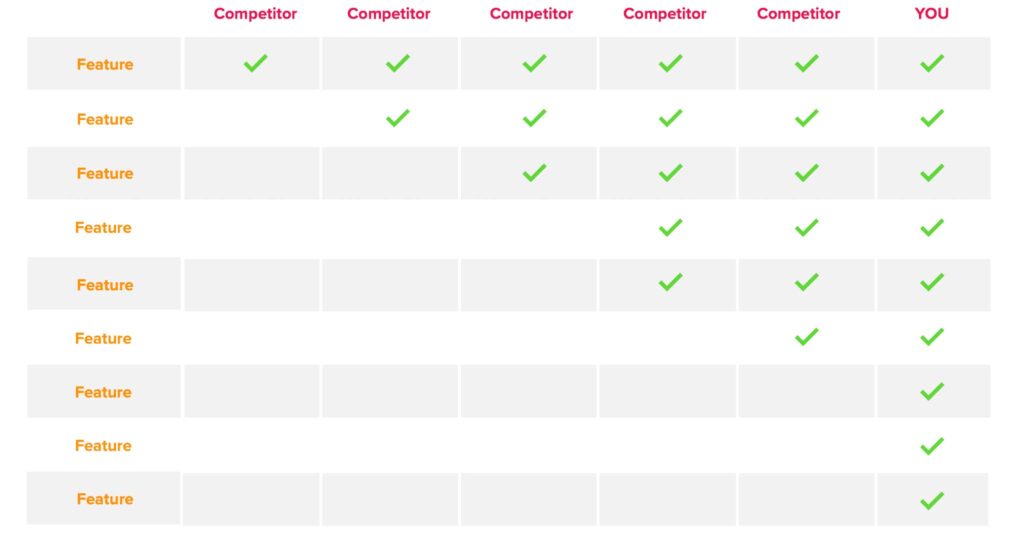It’s common for there businesses to leverage one of two approaches to product positioning. First, product positioning is a product marketing tactic. Its goal is to create a unique image of the product in your potential customers’ minds. This image should be memorable. Differentiate your product from competitors.
Convince customers your product is the best option.
This is the key to success in the market. In this blog post, we will explore two approaches to product positioning: benefit-focused positioning and competitor-focused positioning.
1. Benefits Focused Positioning
Benefits focused positioning focuses on the unique benefits that your product offers to customers. This approach emphasizes how your product solves a specific problem or fulfills a need that other products in the market do not.
This approach requires you to identify your target customers, their needs, and their pain points. This is often done through market research and surveys to determine what features of the product will be most appealing to the target audience. Once you have a clear understanding of your target customers, you can position your product as the best solution to their problem or need.
For example, if you are selling a toothpaste, you can position it as a toothpaste that not only cleans teeth but also provides teeth whitening benefits.
This type of positioning persuades customers that your product is superior to other toothpaste options in the market, as it offers additional benefits besides basic tooth cleaning.
2. Competitor Focused Positioning
Competitor focused positioning concentrates on the uniqueness of the product in comparison to its competitors. This approach is all about highlighting how your product is different from others in the market; this might include higher quality, more features, or a better overall value for the price.
For example, if you are selling a water bottle, you can position your product as a better option due to its unique features.
This approach requires you to focus on the weaknesses of your competitor’s product to further differentiate the product in the customer’s mind.
Maybe your bottle is made from a more durable material, is BPA-free, or has a built-in filter to purify water. Including some of those “hot button” concerns could go a long way when doing competitor-based positioning.
If you’re selling technology or services, a competitive analysis matrix can be very powerful in illustrating the strengths of your product and the weakness of your competitors.

Both approaches to product positioning can be effective, and the one you choose depends on your product and target market. Benefit-focused positioning tends to work well when you are launching a new product or entering a market where there is already a lot of competition.
Keep in mind that comparative positioning is more effective when you can demonstrate your product’s overall value or superiority in comparison with competitors.
Your position strategy should remain dynamic over time, adapting to changes in the market and the need of your customers.
By better understanding the two approaches product positioning, you can create a successful brand image for your product by highlighting its unique features and benefits. Ultimately, the goal of the positioning strategy is to entice customers to choose your product over others.

